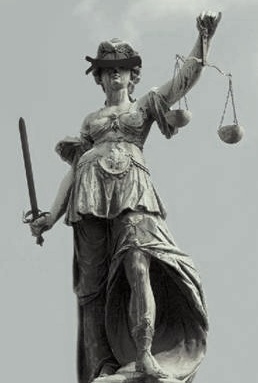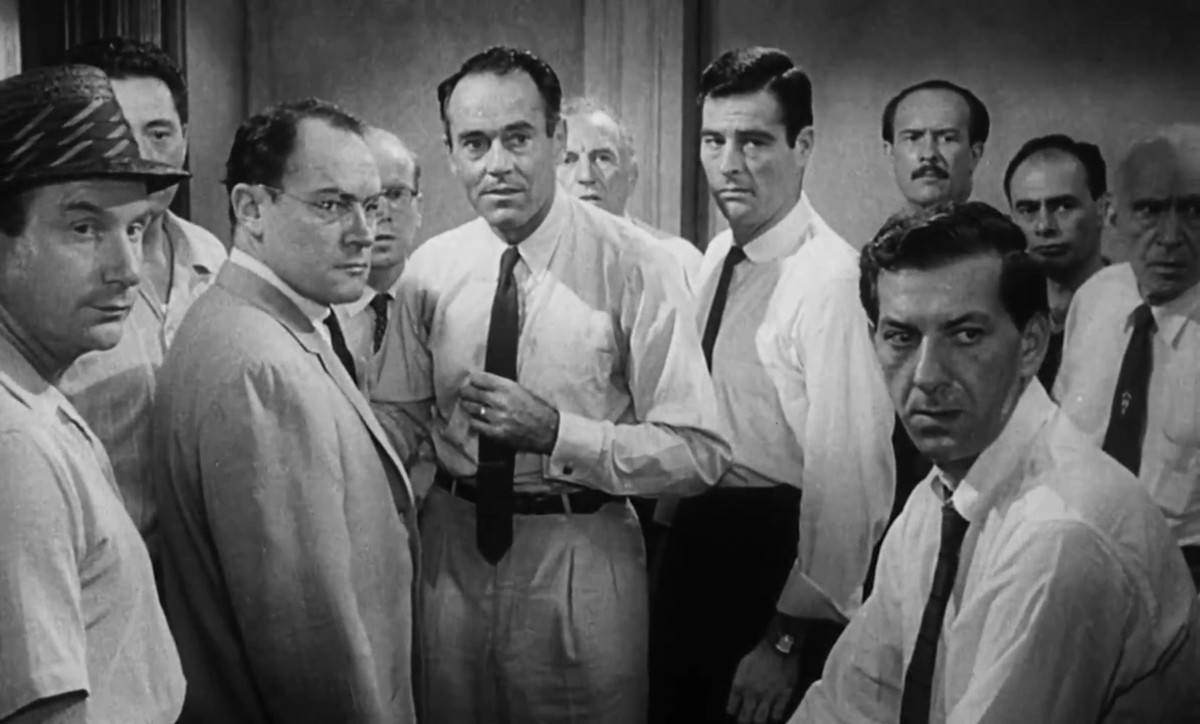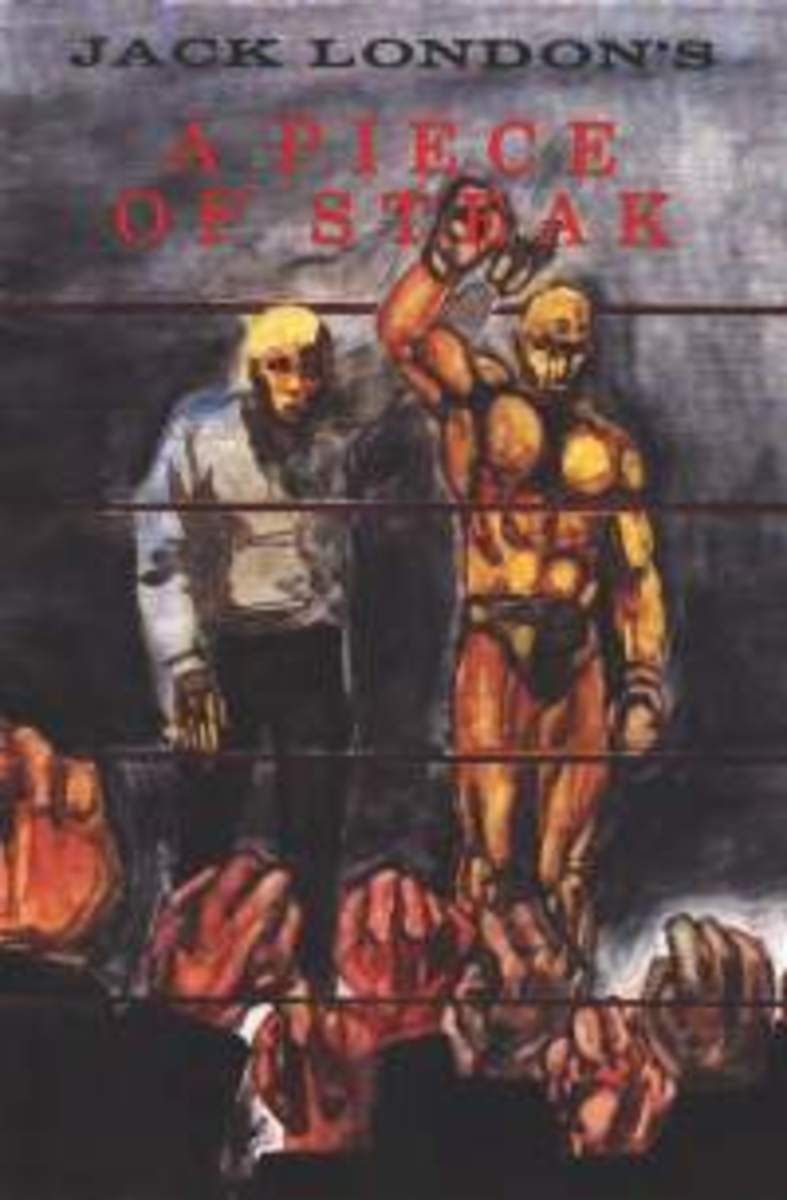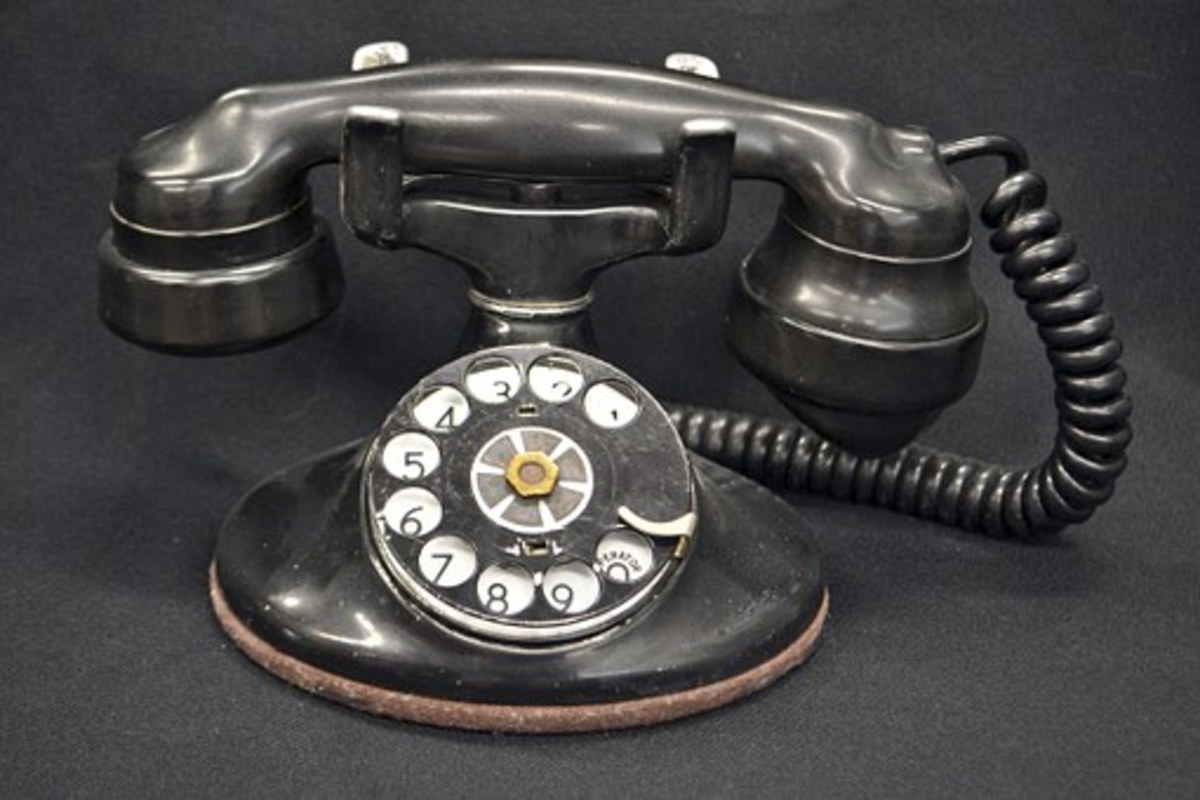What is Justice? What Does it Mean to You?

Imagine a World Without Justice
For over 20 years I interviewed lawyers and judges involved in civil jury trials. As founder and publisher of The New York Jury Verdict Reporter I had a bird’s eye view of the battles waged in our courtrooms every day. I became fascinated by the interplay between judges and lawyers, litigants and expert witnesses, and the often startling results, both as a practicing lawyer and later as a journalist. It became clear to me that the profession of judging is unique in American life, and does not lend itself to comparisons to other occupations. It also became clear that the men and women of our judiciary lead a scary life; scary, that is, if they take their jobs seriously. Theirs is an occupation that affects the lives of people who come before them in profound and even life-changing ways.
Judges impact society in a way that is disproportionate to their numbers, because the field in which they labor - the law - guides, rules, and keeps us from the edge of chaos. There are about 51,000 judges of all types in the United States, including magistrates, arbitrators and mediators. There are some 1.2 million lawyers, about 22 per judge. Legislation, government regulations, and judicial decisions spawn complexity, and just as scientists and technologists help us negotiate the intricacies of the physical world, judges show us how to comport ourselves in the world of law. And sometimes they are wrong.
Lady Justice

We are all familiar with the statue of Lady Justice that adorns courthouses across the land, either as a sculpture or a painted image. Lady Justice always has three recognizable features: she is blindfolded, manifesting her impartiality; she holds the “scales of justice,” showing that she is ready to weigh competing claims; and she holds a sword, indicating that she means business. It’s useful to keep Lady Justice in mind when thinking about the concept of justice.
Philosophers since Plato have been whacking away at the concept of justice like a piñata. The purpose of this book is not to dissect the various and changing concepts over the centuries, but to address the concerns of justice in a way that is familiar to any reader. Webster’s captures the essence of the concept, and defines justice as "(t)he quality of being just; conformity to the principles of righteousness and rectitude in all things; strict performance of moral obligations; practical conformity to human or divine law; integrity in the dealings of men with each other; rectitude; equity; uprightness."
The Book: Justice in America: How it Works - How it Fails
Whenever I do a book signing for my book Justice in America: How it Works - How it Fails, I always ask the audience for a one word synonym for justice. Invariably the word "fairness" is shouted out. When someone says “that isn’t fair,” he often means “that isn’t right,” or “that isn’t just.” We make these judgments all the time, without thinking about it. If you’re short-changed at the gas station, that isn’t fair. If you see someone swipe an item from someone’s shopping cart, that isn’t right. These judgments don’t require a philosophical analysis, or ponderous dissection of competing interests. Usually, you just know “it ain’t right.” Our concept of justice is deeply imbued with morality. But the hooking up of the word fairness with the word justice is a modern Western concept. There was a time when justice is what the pharaoh, emperor or king said it was. They never asked what is justice; they simply meted it out. But in the West, especially in America, we equate justice with fairness.
Justice is a human need, just as food or water, and a lack of justice results in a hunger or thirst for it, as if one senses that something is missing - a “disturbance in the force.” A longing for justice seems to be an innate human desire, not one formed by ideological opinions, although ideology can impact what one believes to be justice. A sense of justice or rightness lives in your gut, unless you are a sociopath, in which case you couldn’t care less. A sociopath or a person suffering from an antisocial personality disorder is defined in the Diagnostic and Statistical Manual of the American Psychiatric Association as "...a pervasive pattern of disregard for, and violation of, the rights of others that begins in childhood or early adolescence and continues into adulthood." If a normal person commits an act of injustice, he feels unsettled, perhaps ashamed or embarrassed, and although he may try to justify his actions in his mind, the very attempt at justification shows that he does care about his actions, and how they affect other people. Don’t expect justice from a sociopath.
The following is a group of vignettes, most based on real facts. I ask you to determine if the facts indicate that justice has been done. If you feel uncomfortable after this exercise, relax. The object is to make you feel uncomfortable, and also to demonstrate that the elusive concept of justice isn’t an easy one. I do not provide answers, because I’m not sure I have them.
Is There Justice in the Following Situations?
1. Did the Defendant win by getting the death sentence? Two men held a family hostage, including a mother, father, and two daughters, ages 11 and 17. They beat the father with a baseball bat and left him for dead in the basement. He crawled to safety to a neighbor’s house. The men took the wife to her bank to obtain $15,000. A bank security video was seen on national television which shows her advising the bank teller what is going on. You can’t hear the woman, but her face is a graphic image of the word “fear.” The teller alerts the police, but it is too late. The men sexually assault the wife and one of the daughters, then strangle them and set the house on fire. A jury returned a verdict on multiple counts against one of the men, Steven Hayes. His partner, Joshua Kimisarjevski will be tried in 2011. Hayes was sentenced to death. Now here’s the rub: By all accounts Hayes wants to die, and was pleased with the verdict. Question: How do you punish a person who wants to die?
2. Millions for the Lawyers – Pocket Change for the Clients. A class action lawsuit was filed against Allstate and Farmers Insurance Companies over a practice called “double rounding.” Under this method an insurer would “round up’ a premium of, say, $1,000.50 to $1,001. The companies would then round again for semi-annual premiums. So $500.50 becomes $501, resulting in a driver paying $1,002 annually, or an extra $1.50 per year. The case settled. Each plaintiff-driver in the class got $5.50 (yes, five dollars and fifty cents), and the attorneys received a fee of $10.3 Million. Nice work if you can get it! Was justice done here?
3. Stoned to death for the offence of being raped. A 13-year old Somali girl claimed that she was forcibly raped by three men as she walked to visit her grandmother. After her family reported the incident, she was accused of adultery by local Islamist militants. She was sentenced to death by the most barbaric of methods - stoning. The sentence was carried out by dozens of men in a stadium packed with over 1,000 observers. In a sane world, can this ever be called justice?
4. 50 years-to-Life for Shoplifting. A guy stole five children’s videotapes from a K-Mart, and 2 weeks later swiped another four videotapes from a different K-Mart. The retail value of the property was just over $150. His testimony was that he wanted the videos as Christmas presents for his nieces. He had a criminal record of petty crime going back a couple of decades. Under California’s “three strikes” law, a third felony offense results in a mandatory minimum of 25 years to life. He was convicted of two felonies for the videotape thefts, nailing him with the third strike. He was sentenced to two consecutive 25-year- to- life sentences, making it 50 to life. The shoplifter, Leandro Andrade, will be eligible for parole in 2046 – when he is 87 years old. Did Mr. Andrade receive justice?
5. Taxpayer Funded Bonuses. Insurance giant AIG received a massive taxpayer funded bailout of some $173 million during the financial crisis in 2008. Nevertheless, the company awarded over $165 million in bonuses to 418 employees, 73 of whom got over $1 million. The company defended the bonuses arguing that if it didn’t honor its contract with the employees, they would flee for other ventures. Ask a pink-slip recipient if this is justice.
6. Price Gauging or Market Efficiency? Nothing makes a politician happier than to call a press conference after a disaster, and accuse assorted villains of price gauging. After any major hurricane, there are always wide complaints of gasoline price gauging. But some argue that market forces should always be allowed to play out, and that higher prices insure that refineries will have the incentive to get the fuel to where it’s needed, and that artificially low prices result in shortages. If the market was unable to assign higher prices, the market would then replace the high prices with scarcity. What is right?
7. Is it Fair to be Born with a Silver Spoon in your Mouth? Liberals believe that our institutions should strive to make things right for the downtrodden (see discussion of John Rawls above). Conservatives believe that an individual’s best path to success is to let that person be challenged, and to use the challenges to forge a better life. . On October 28, 1955, an African-American boy is born in a public hospital in a poor section of Brooklyn, NY. His parents are both drug addicts, and his father leaves the family when the boy is 3 years old. He misses school constantly and begins a career as a petty criminal when he is 15, and receives a 25 year sentence for armed robbery when he is 25. On the same day in Seattle, Washington, another boy is born. He is white, has educated and supportive parents who surround him with all the accoutrements of learning. The little boy from Seattle is named Bill Gates, and he becomes a gozillionaire. Ok, this example is about distributive justice, but I felt it belonged here as an example of what the debate is all about.
8. What a difference a block can make. On the same day, within a block of each other, two young men are severely injured in separate car accidents. One accident takes place in the Bronx, New York, and the other in Westchester County, which borders the Bronx. For the sake of this hypothetical, assume they are the same age, earn similar incomes, and sustain the same severe injuries. Each contacts a talented personal injury lawyer. A jury renders a verdict in Westchester, awarding plaintiff $95,000. Westchester, a wealthy area, is known among lawyers for its conservative jury verdicts. The Bronx, on the other hand, consists of working class neighborhoods, populated by potential jurors who tend to go for the underdog. and is known for its generous jury awards. The Bronx jury awards the other plaintiff $1,500,000. One block, big difference. Is it justice?
9. How you are Injured can Make a Big Difference. Similar to the above example, two young men are severely injured, one in car accident, the other by a physician who committed medical malpractice. In this example, the subsequent jury verdicts are in the same county, but in a state where there is a $250,000 cap on pain and suffering damage awards in medical malpractice verdicts. The car accident victim gets a verdict for his pain and suffering of $5,000,000. The medical malpractice victim gets $250,000. Same injury, big difference. Is this justice?
10. A Compassionate Decision that Resulted in Tragedy. In 2005 a Navy SEAL reconnaissance team was on a secret mission in Afghanistan near the Pakistan border. They were seeking a high-value enemy target, a Taliban leader who commanded about 150 heavily armed fighters. Three goatherds and about 100 goats happened upon the team. The men trained their weapons on the herdsmen and motioned to them to sit down. They then debated about what to do – shoot them or let them go. If they let them go, chances were that the herdsmen would alert the nearby Taliban force, who would then attack the SEAL team. Petty officer Marcus Luttrell cast the deciding vote and they let the herdsmen go. About an hour and a half later they were attacked by the enemy force. Three of them were killed, and only Luttrell survived, although severely injured, by rolling down a hill and crawling seven miles to a friendly village. The Taliban force also shot down a helicopter that was attempting a rescue, killing all 16 aboard. Luttrell would later regret his vote to release the goatherds. “I must have been out of my mind. I had actually cast a vote which I knew could sign our death warrant.” With his vote, Lutrell showed compassion, but the result was hardly justice.
11. It’s Who you Know. A woman accepted an exciting executive position with a fast- growing company. To take the job, she had to relocate her family and leave a secure well paying position. The day before she reported for work the vice-president who recruited her was fired. Her “political” position with the company was that of an outsider - she was considered one of “his” people. Instead of the large office she expected she was given a desk in a hallway. The executive team that she looked forward to working with was indeed a team – and she alone was the opposing team. Her dream of an executive career became the reality of being on overpaid functionary with no future. Inustice, or just the way the chips fall?
12. Sometimes You Lose the Prize for the Wrong Reason. A talented high school senior was everybody’s bet to win the school’s coveted Art History Medal. When she didn’t win the award, she and many others were shocked. The essay was well written, extensive, and thoroughly researched. Years after graduation she would learn from someone on the committee that the reason she didn’t get the prize was that her father was an artist, and the committee assumed that the essay was written by him. Truth is, he didn’t even see the essay until after it was submitted. Can she forget this old injustice?
13. He Would have Died Anyway. Is that an Excuse to Kill Him? Four sailors were stranded in a lifeboat with little food and no water. One of them was a 17-year-old cabin boy. He drank seawater, became ill, and appeared to be dying. On the nineteenth day one of the men stabbed the boy to death. He and the other two ate the boy’s remains. If they didn’t eat, they all would have died. How would you judge them if they were in your courtroom?
14. Chloe – Get me CTU on the Phone! Jack Bauer, the iconic star character in the long running TV series 24, was not hesitant to use “advanced interrogation techniques,” which some consider torture, when interviewing a suspect while a bomb is ticking. If the statue of Lady Justice was replaced by a statue of Jack Bauer, you could eliminate the blindfold and the scales of justice – the sword is all that Jack needs. A member of the fictional CTU (Counter Terrorist Unit), Bauer would save civilization weekly by thwarting the bad guys, and would confront the audience with one of the major moral questions of the day: Is it just and moral to torture a suspect, when you know the suspect has knowledge of a ticking time bomb, and, if it detonates, hundreds of thousands of people will die? Khalid Sheik Mohammed, mastermind of the attacks of 911, was waterboarded – a process that replicates drowning - after his capture by American forces. He divulged information about a planned attack on Los Angeles. That attack was prevented because of the information he gave. Opponents of torture argue that cruelty can never be justice. Those in favor stress the moral righteousness of saving countless lives. One of the tougher calls in moral philosophy.
Justice, and the lack of it, is part of our lives. To the extent that we manage our system of justice well is the extent to which we as a society will continue to grow and prosper.
Russ Moran, the writer of this article, is the author of Justice in America: How it Works - How it Fails, Coddington Press 2011 Parts of this article were excerpted from the book. You can see more details about the book at this address: http://dld.bz/b5xFj
Copyright © 2014 by Russell F. Moran - All Rights Reserved








